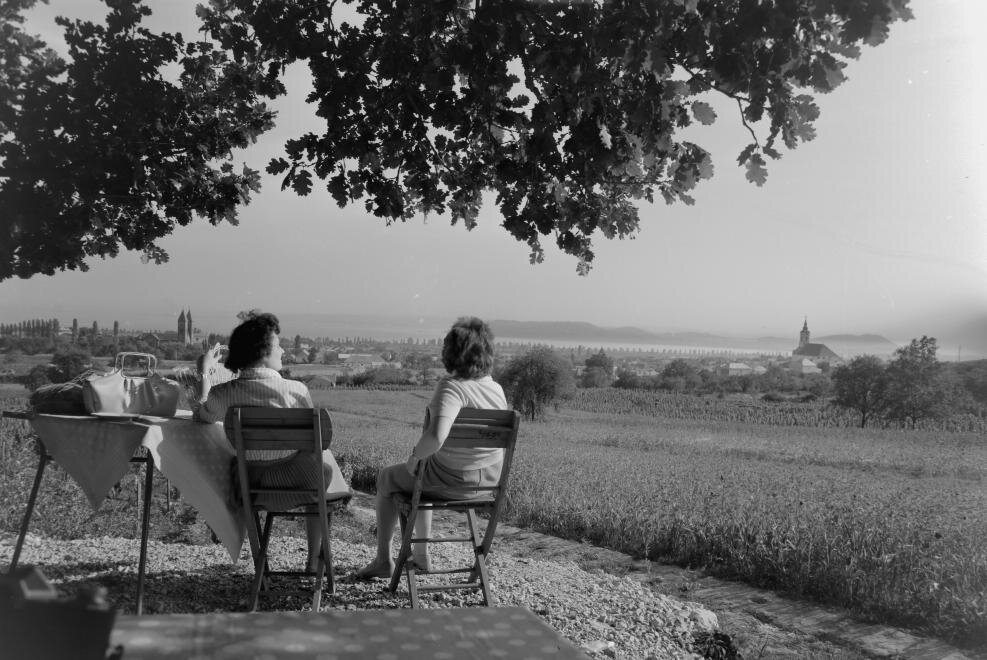The storms of the 20th century did not spare Balatonfüred, but you will see little evidence of it from these photographs – seemingly, it’s been all smiles and fun times. Still, much has changed and these images, dated from 1894 to 1982, will show you how this popular resort town has developed.
An 1894 photograph taken at the church ruins of the late village of Papsoka. The view from this spot, located by the road leading to Balatonszőlős, is incredible.
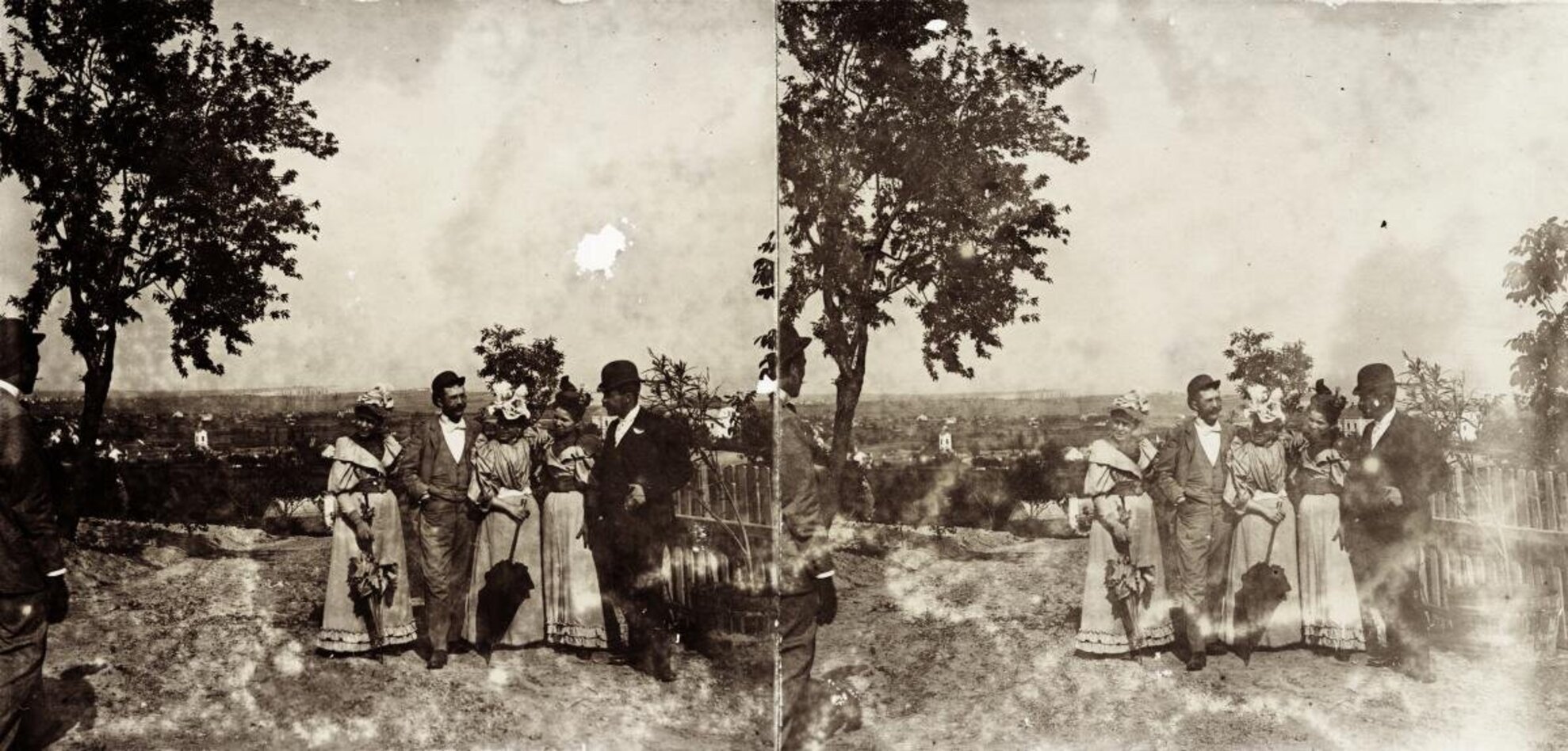
The marina and the bathing house captured from what today is Tagore Promenade, with the Baross steam boat in the background, taken in 1911.
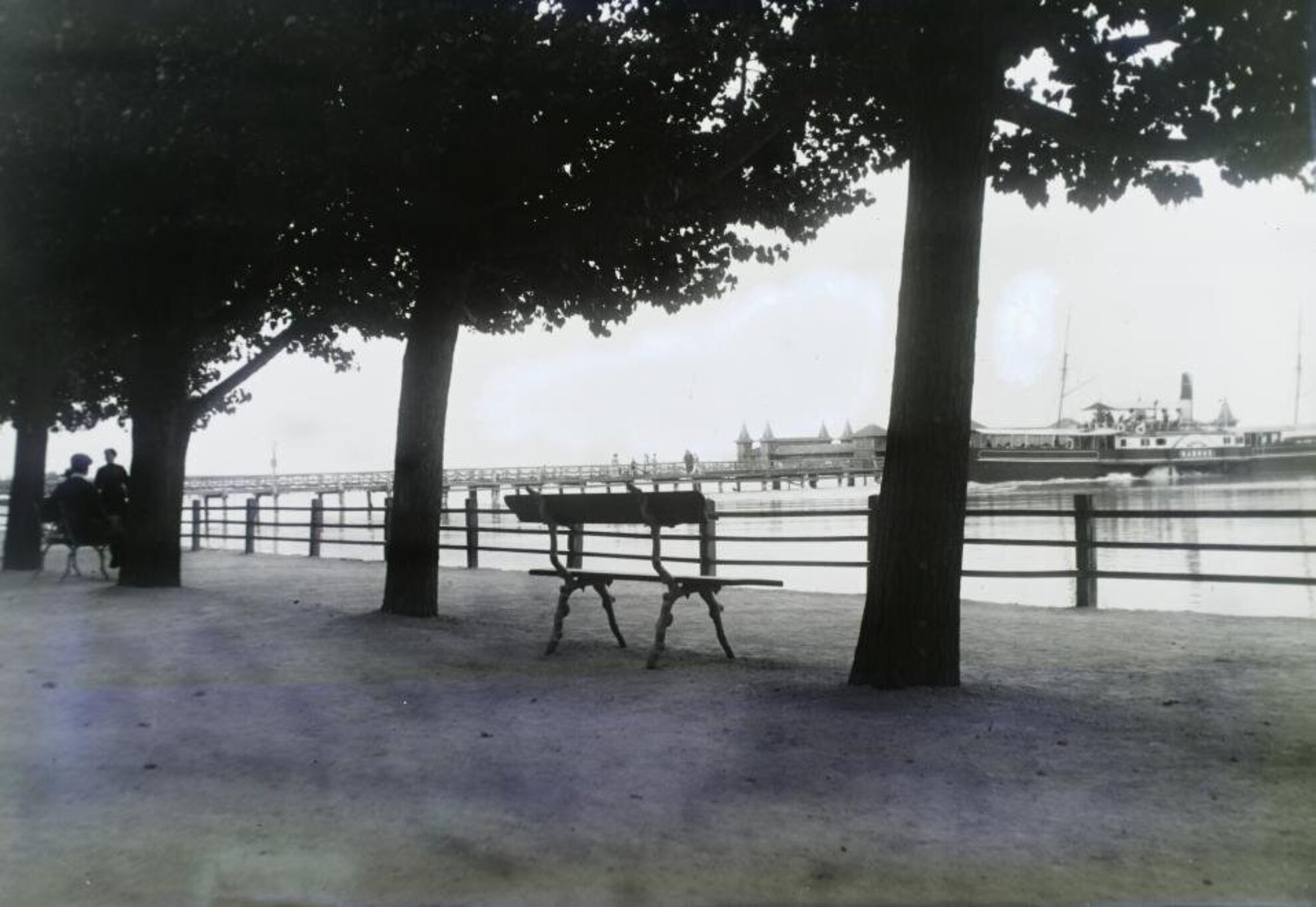
The Yacht Club (later Vitorlás Restaurant) can be seen behind the moored boat in this 1917 photograph.
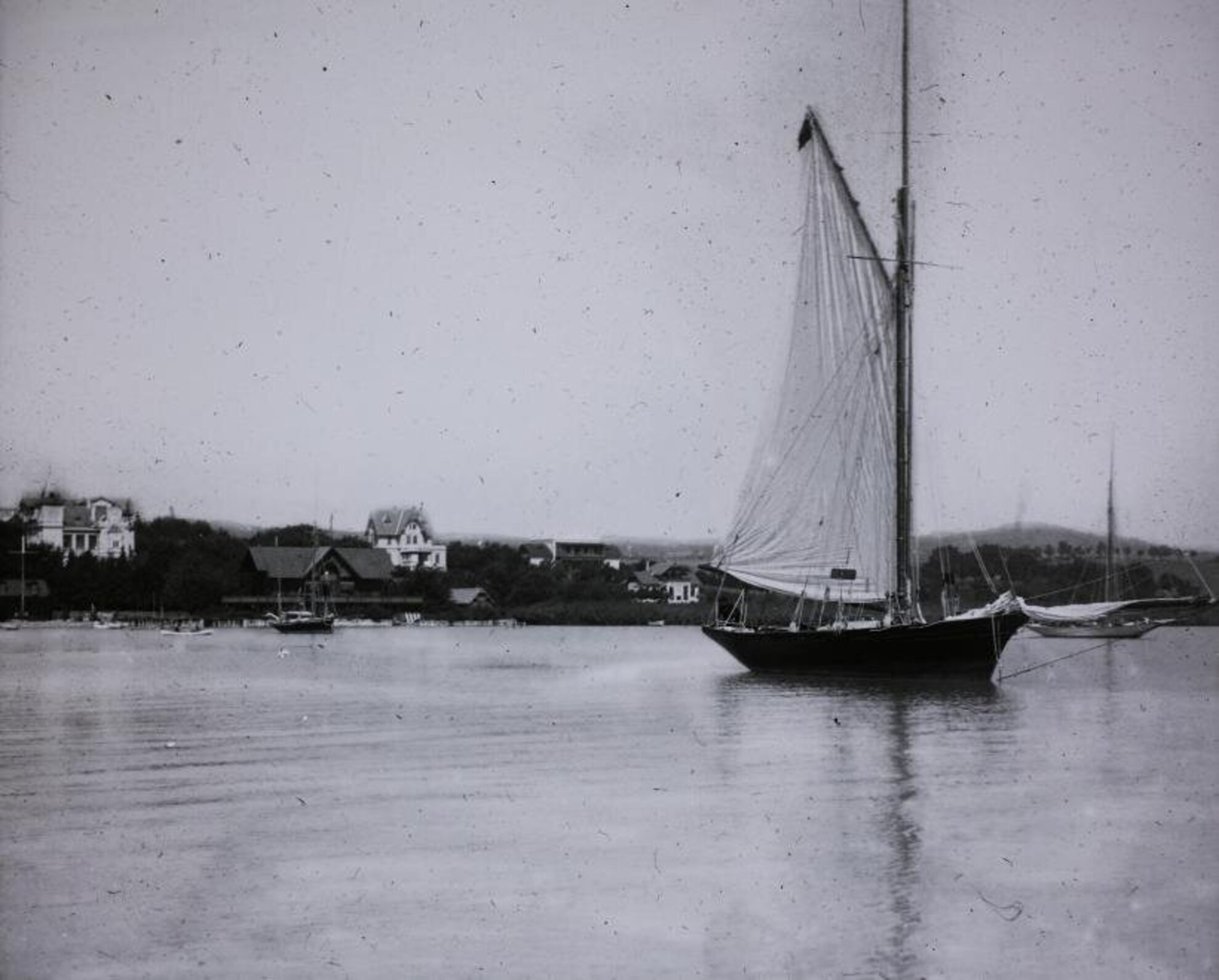
The Royal Hungarian Yacht Club in 1930. Today it’s the building of Vitorlás Restaurant and the Vitorlázeum.
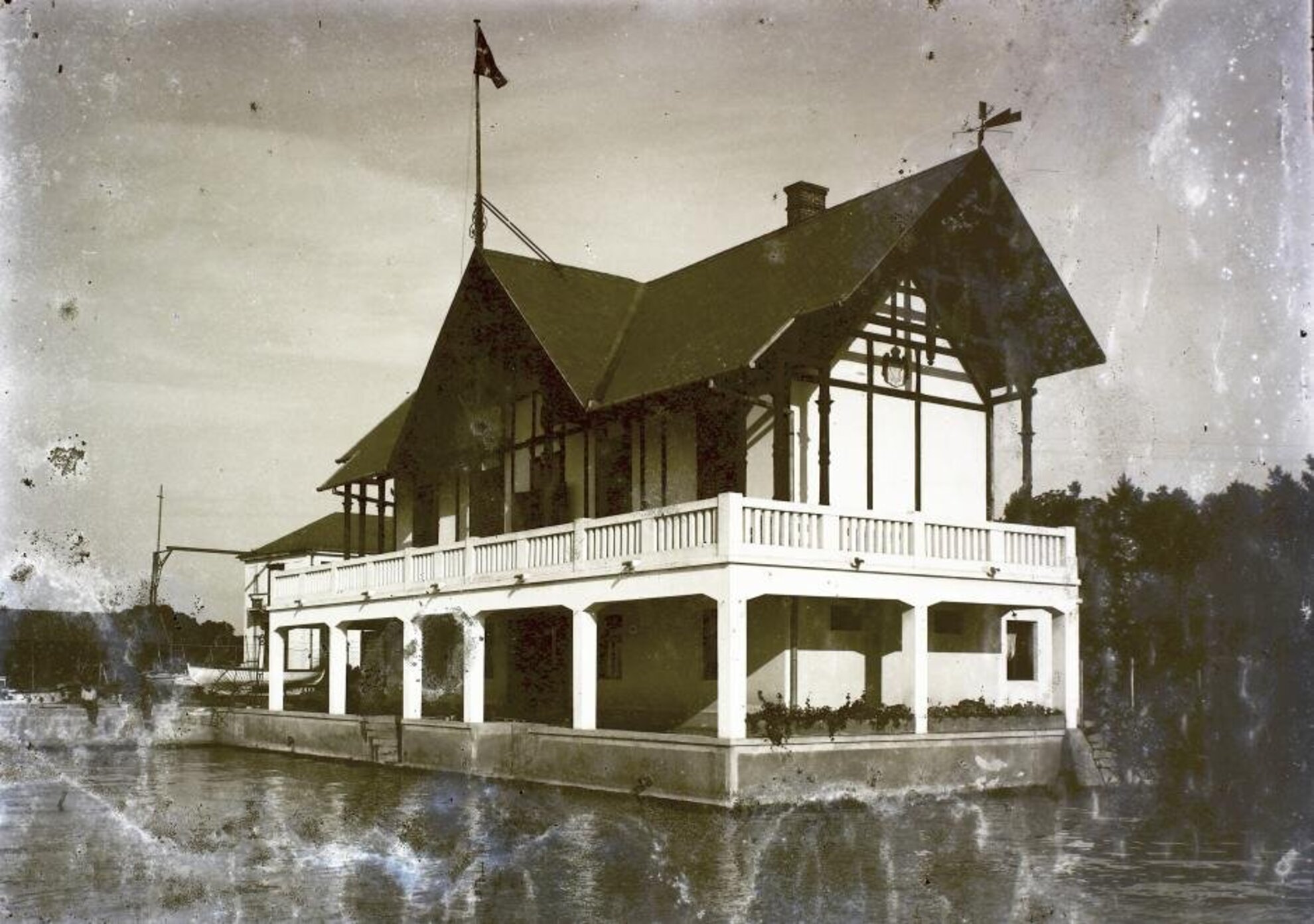
This 1931 photograph was taken at the railway station with geographer Jenő Cholnoky in the centre. A plaque was later erected in Cholnoky’s memory, who survived World War II in Balatonfüred.
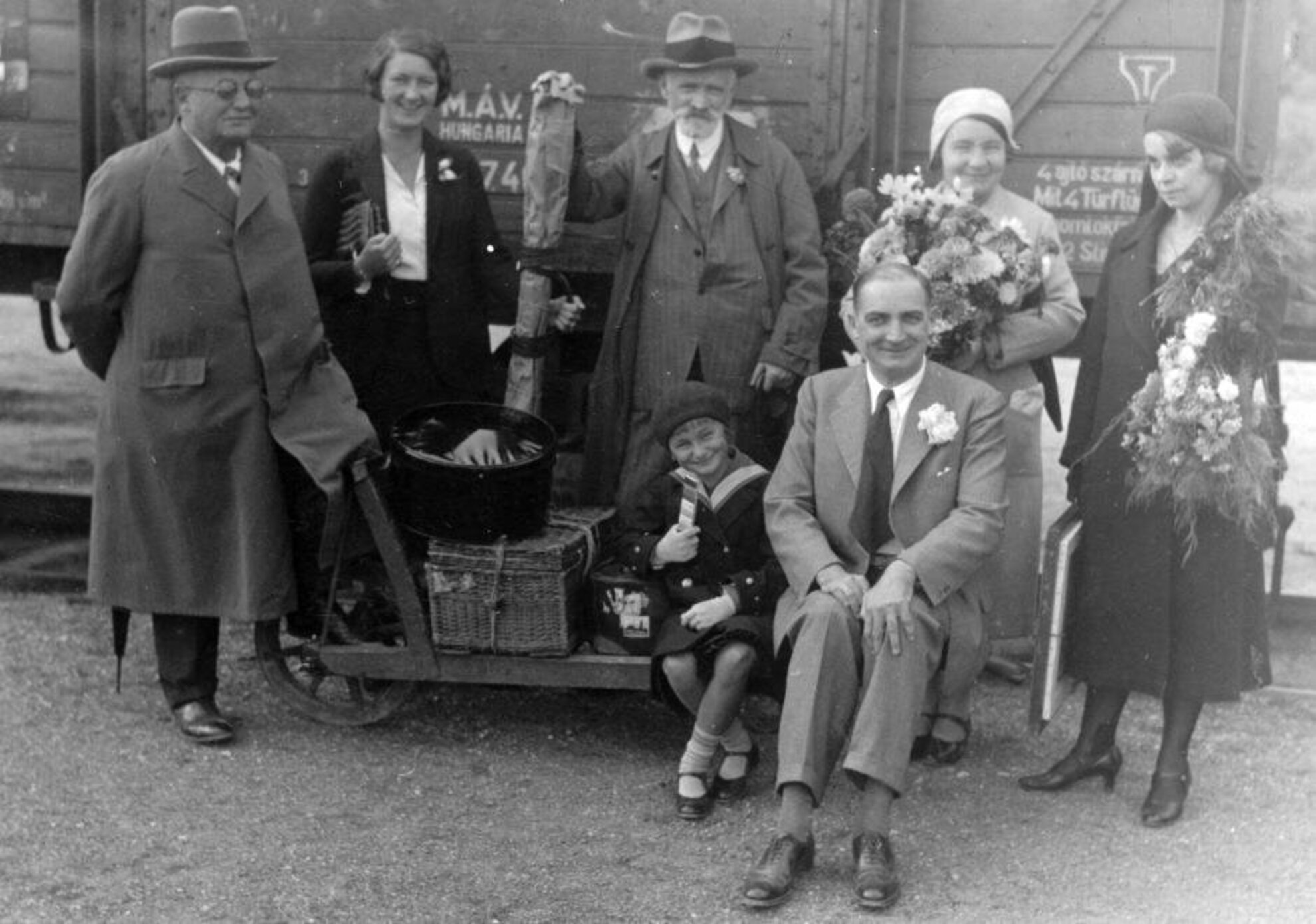
The former bath house of Balatonfüred in 1933. Designed by György Czinege, it was completed in 1889, but it exploded in 1945 under uncertain circumstances.
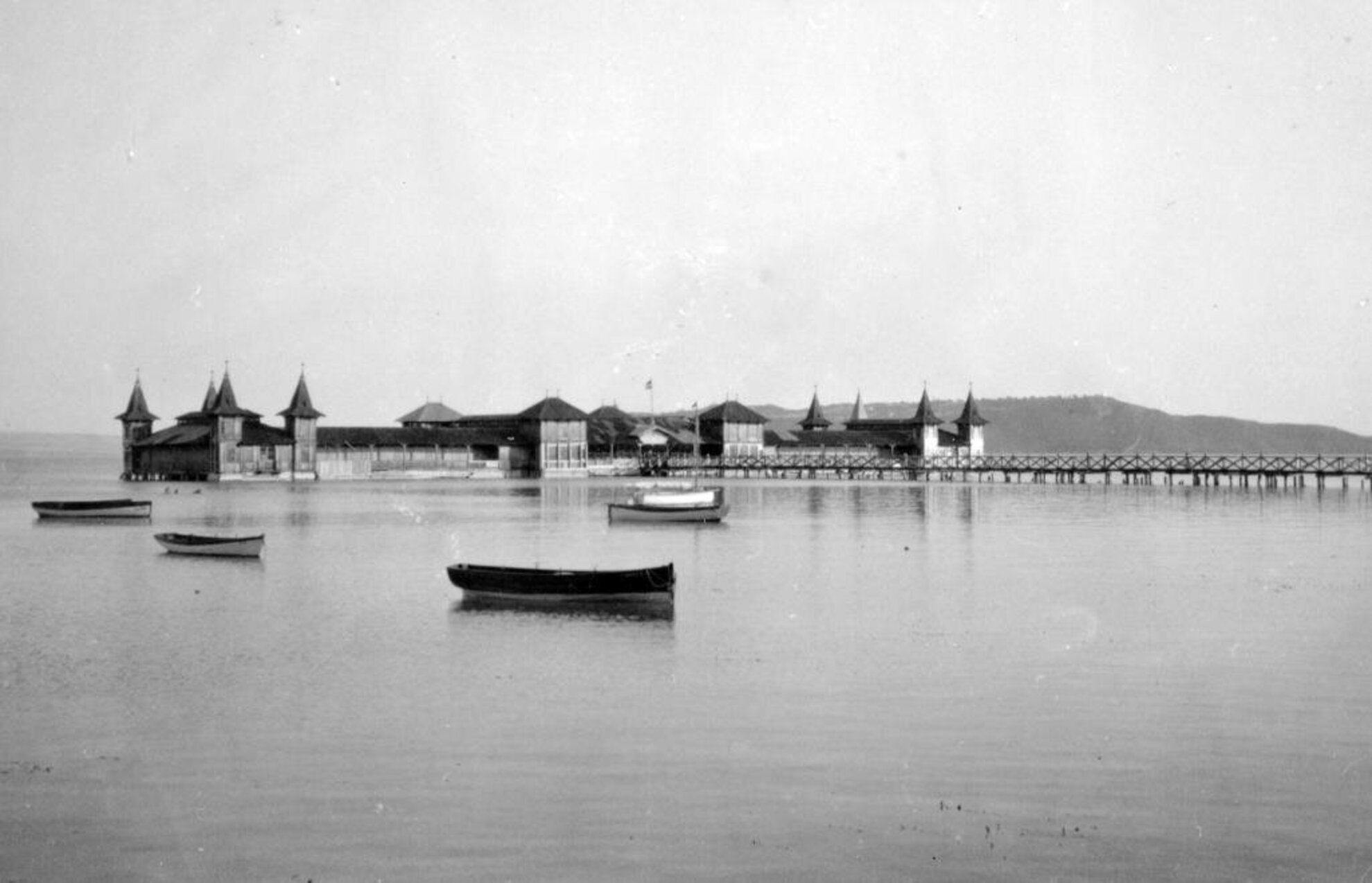
The Lajos Kossuth (now Franz Joseph) sour-water spring in front of the Erzsébet Sanatorium in 1938.
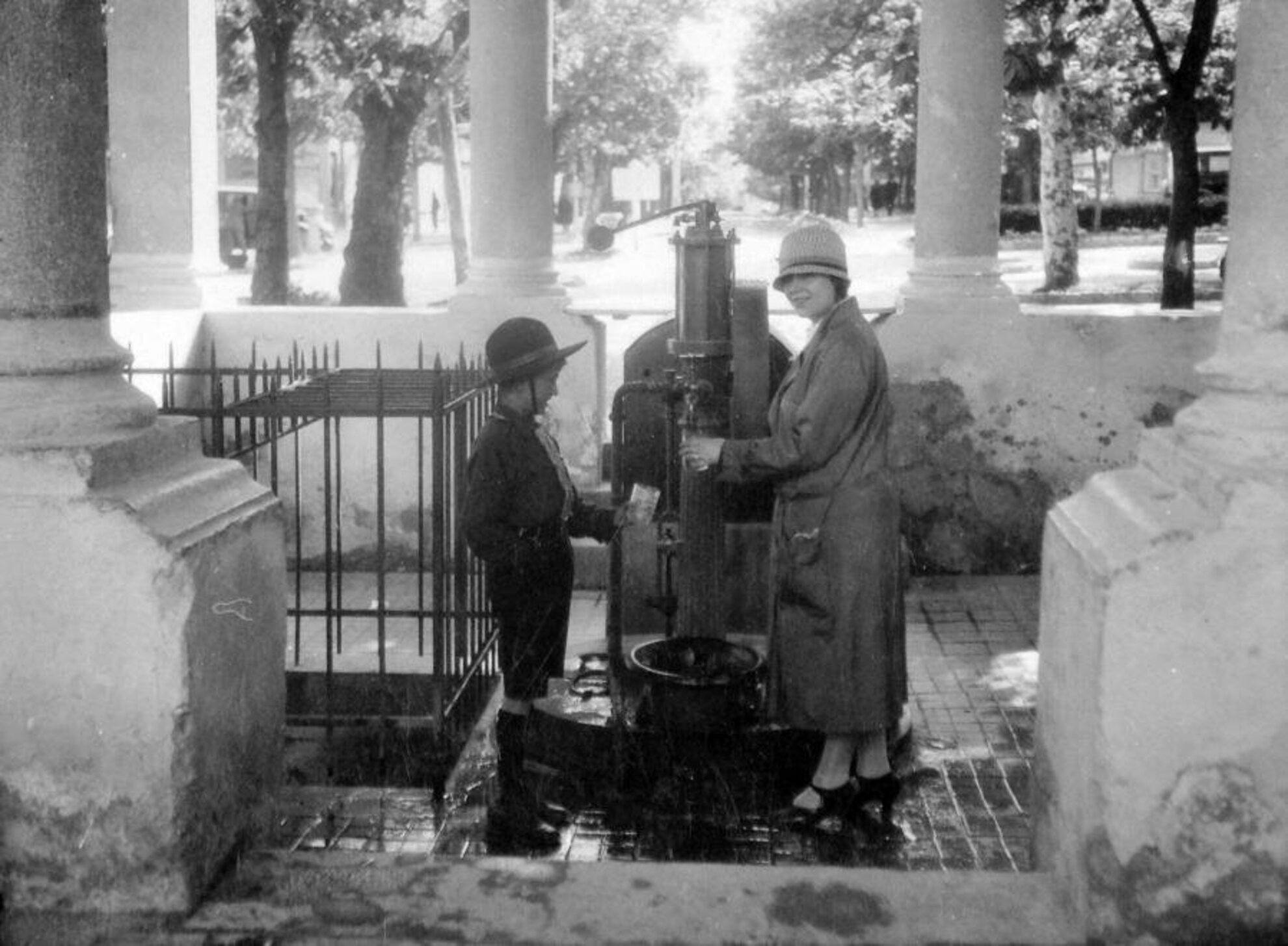
Deák Ferenc (today Csányi) utca, with the terrace of the Liliom restaurant. Esterházy beach is visible in the background. This 1940 photograph also shows actors Sándor Naszódy and Ferenc Pethes.
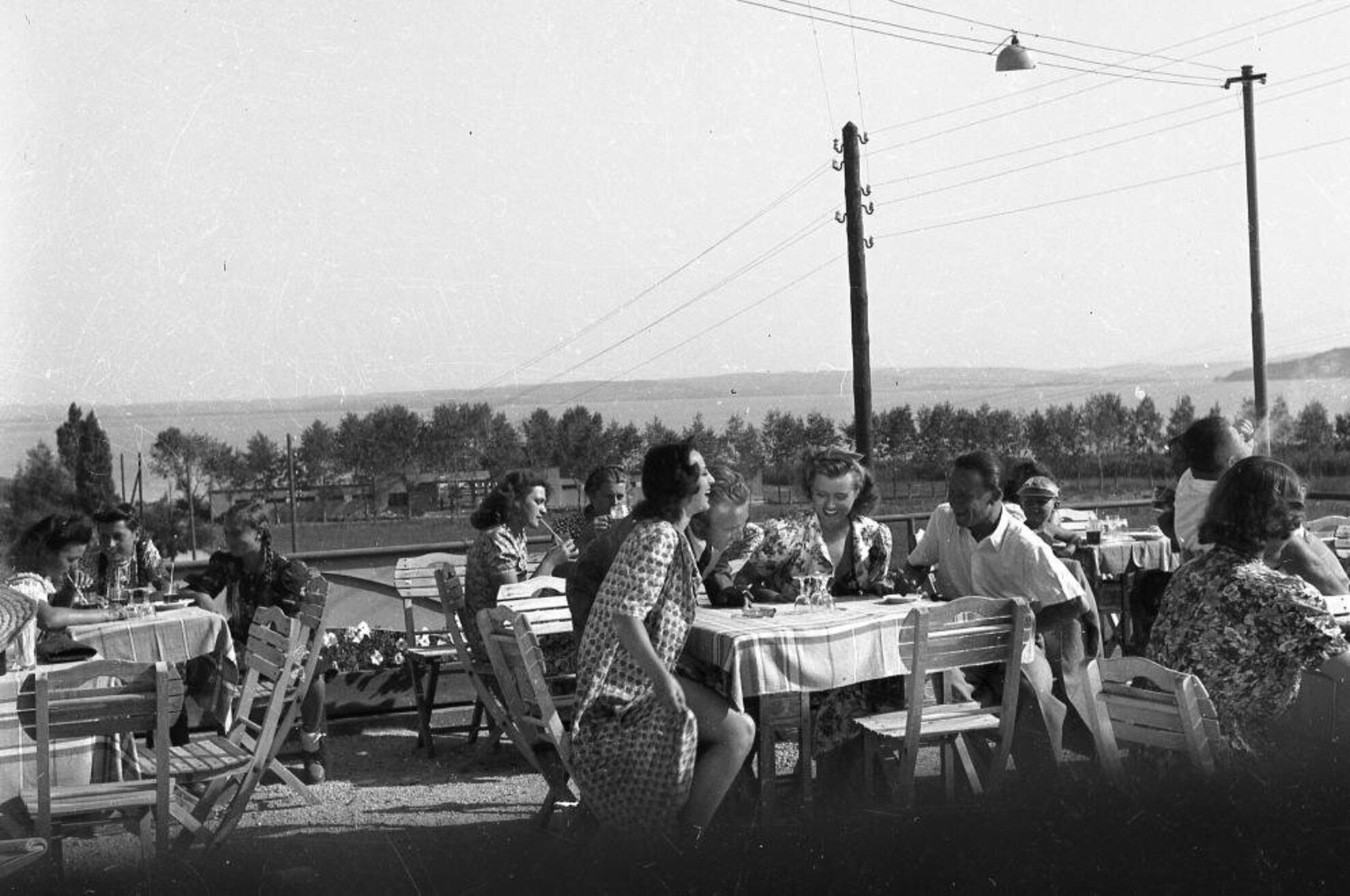
The marina at the Yacht Club, with the pier to the left in 1942.
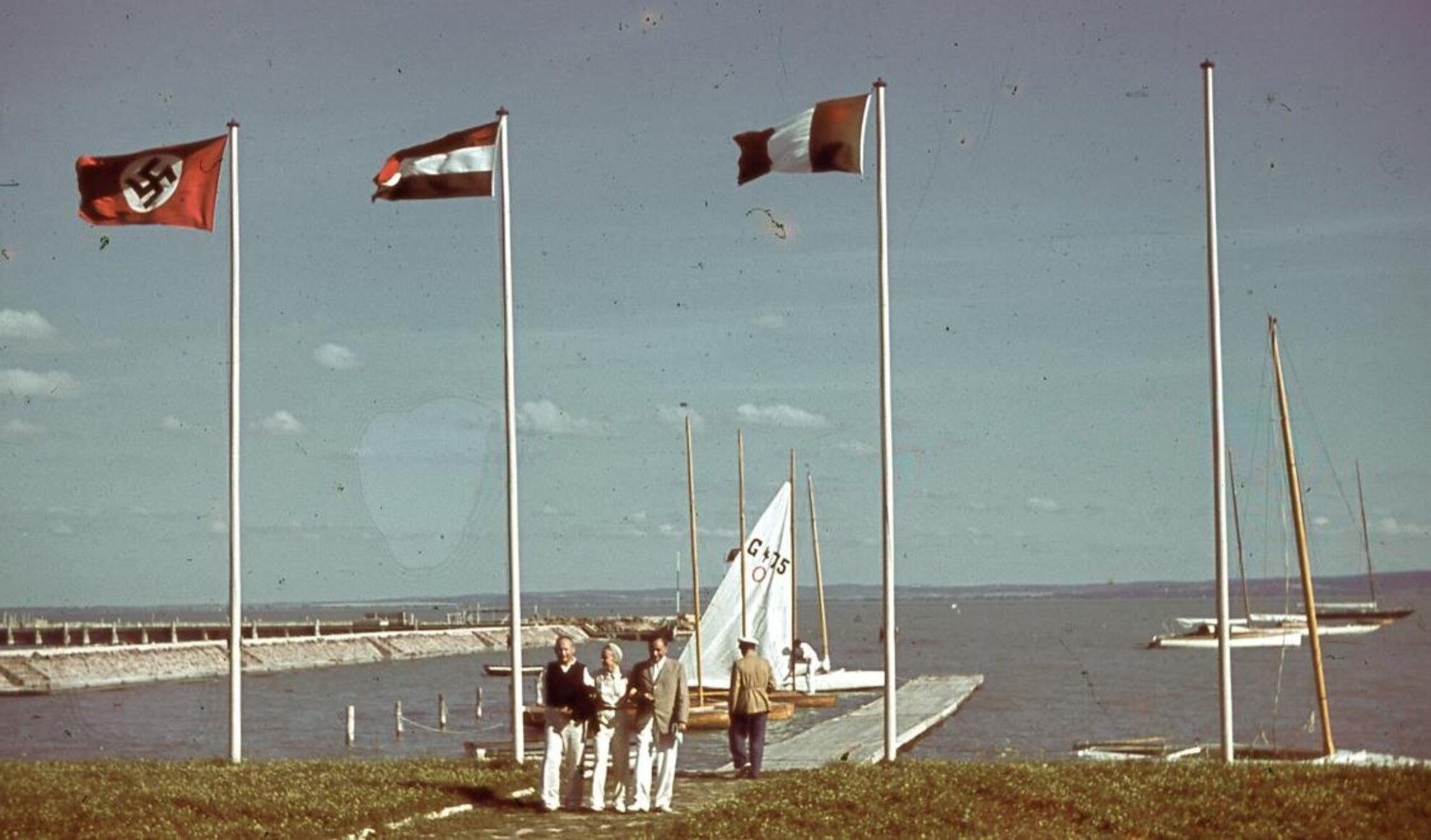
Blaha Lujza utca and the Round Church as seen from Jókai Mór utca in 1943. Not much has changed since, except for the types of cars.
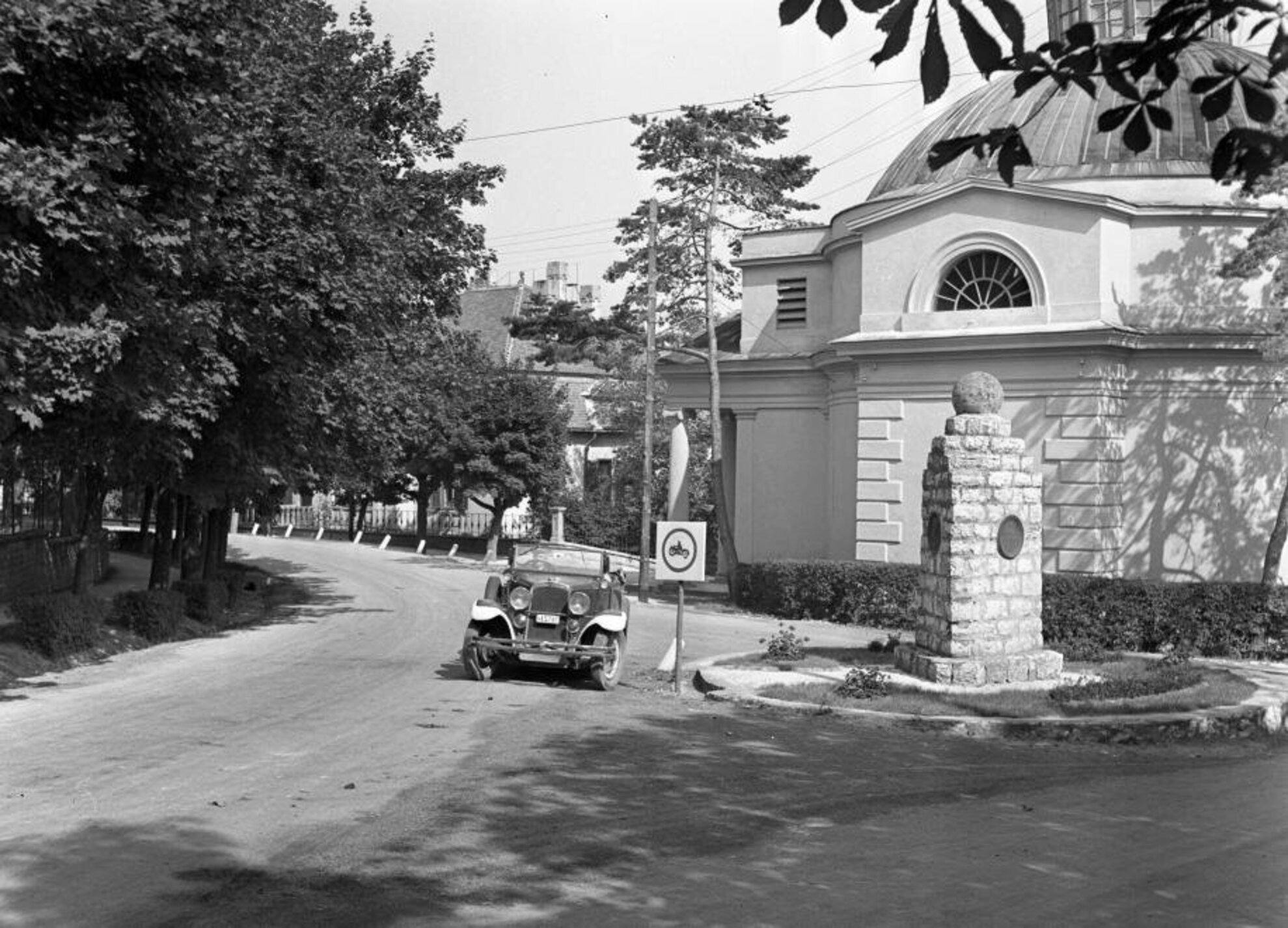
The sun is shining in this 1947 photograph, which is a nice metaphor for how the residents might have felt after the war was over.
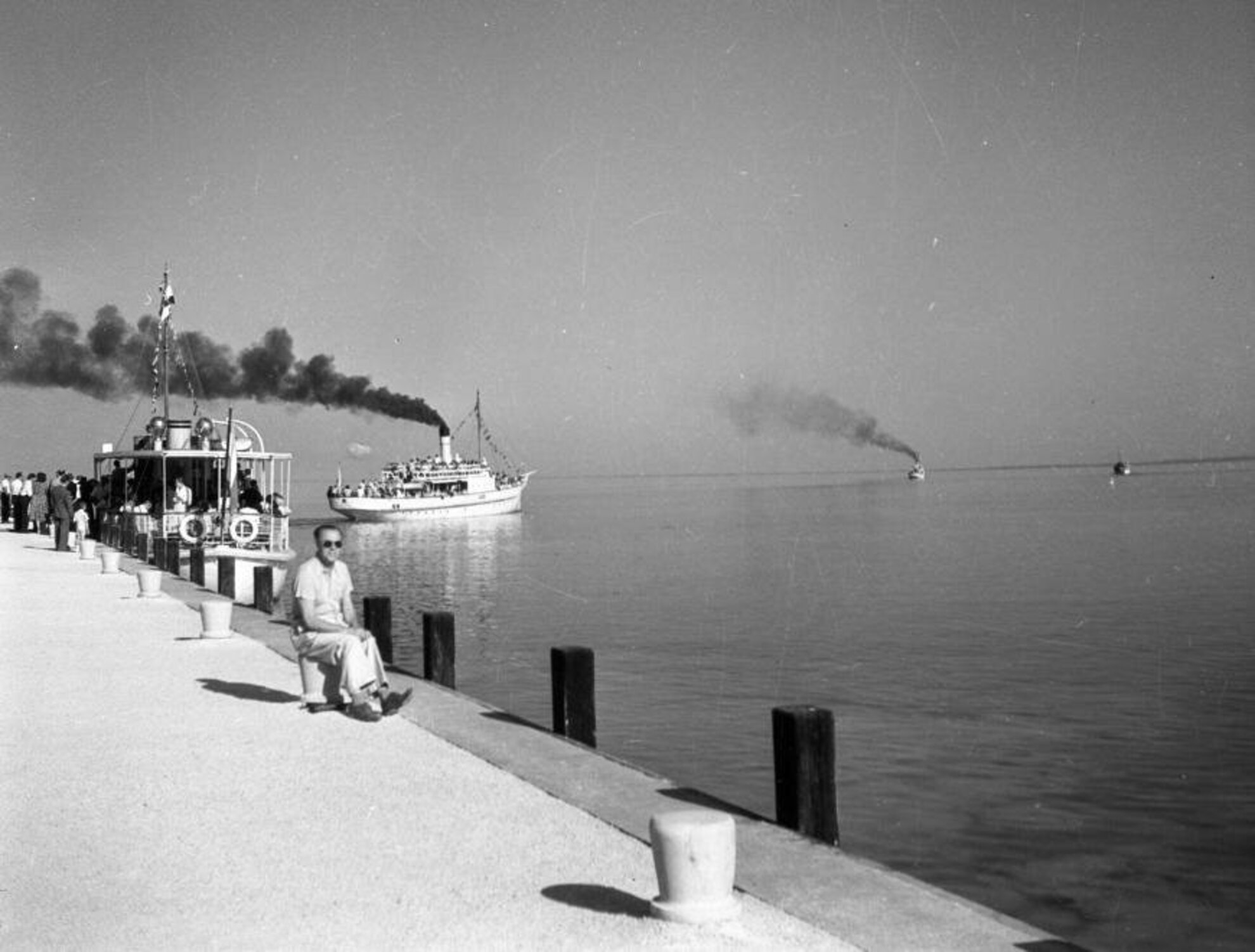
The Yacht Club remained the same even at the start of the Stalinist Rákosi Era in 1952.
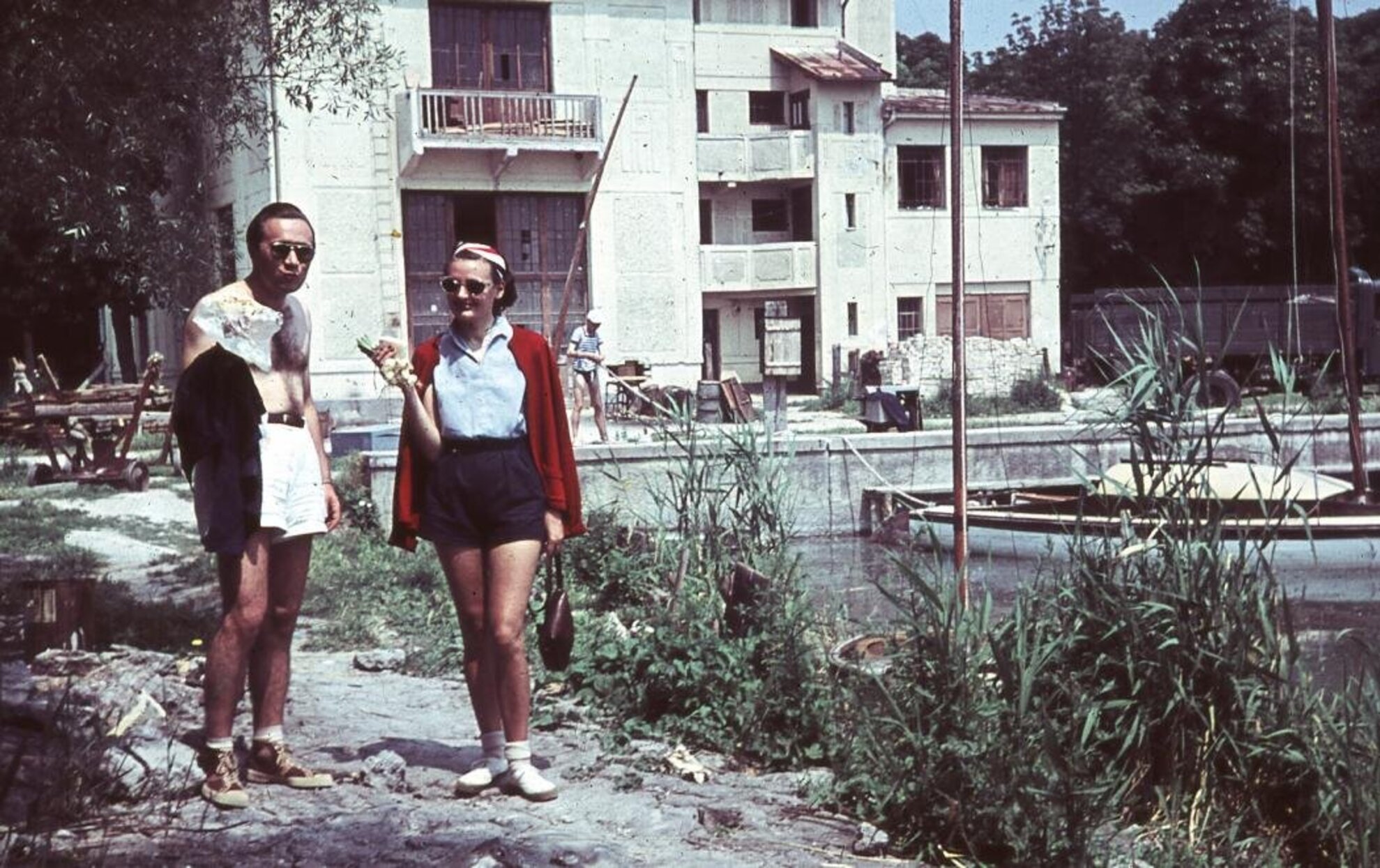
Vásártér utca, with Fehér Church in the background. In the past, the two parts of Balatonfüred were like two different worlds. Lower was more modern and enjoyed international renown, while the upper section was more rural even in 1955.
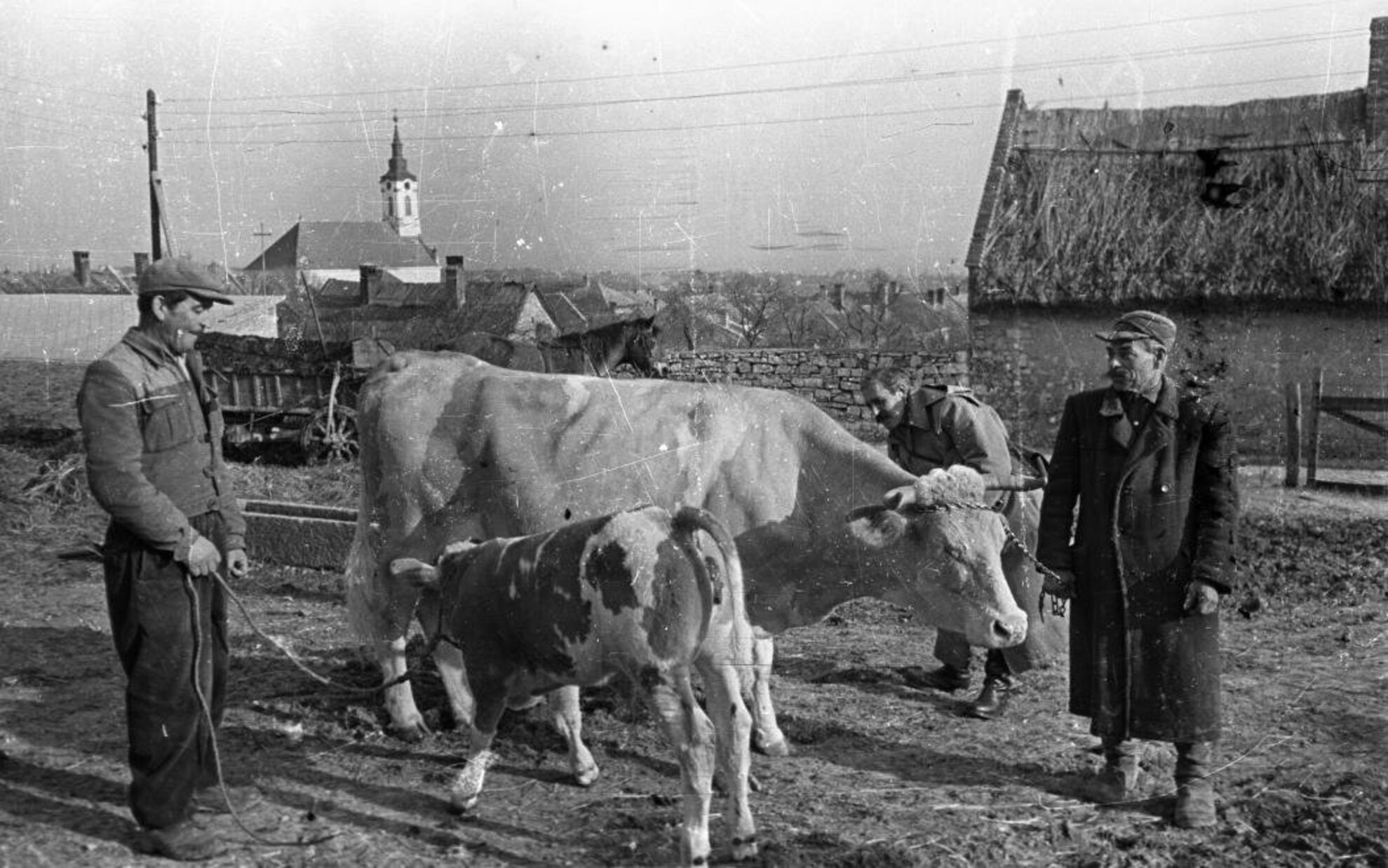
94 Arácsi út, Gombás Mansion, one of Balatonfüred’s most beautiful 18th-century buildings, in 1955, when it hadn’t yet been revamped.
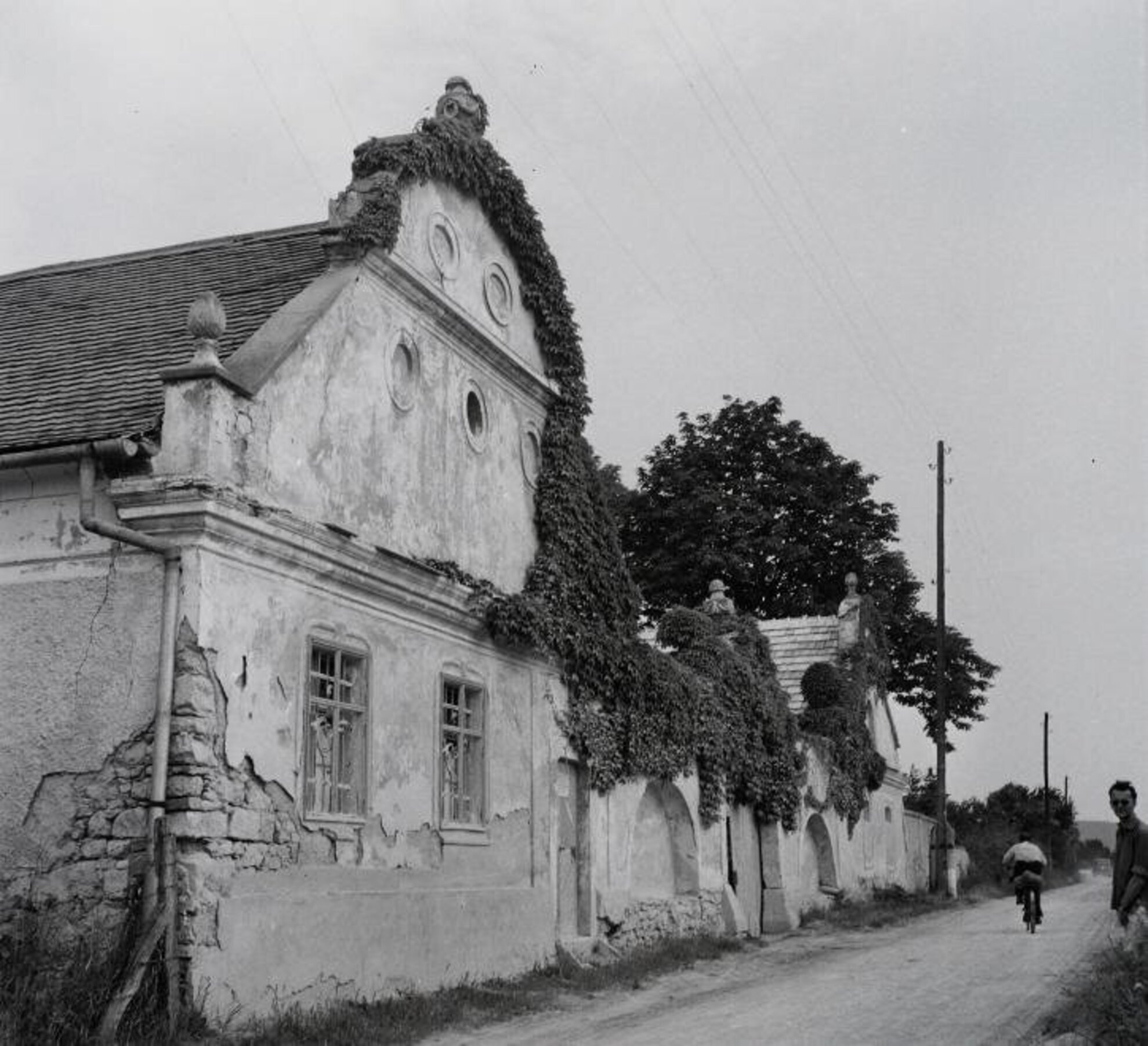
This 1956 picture shows that Balatonfüred was still more like a village.
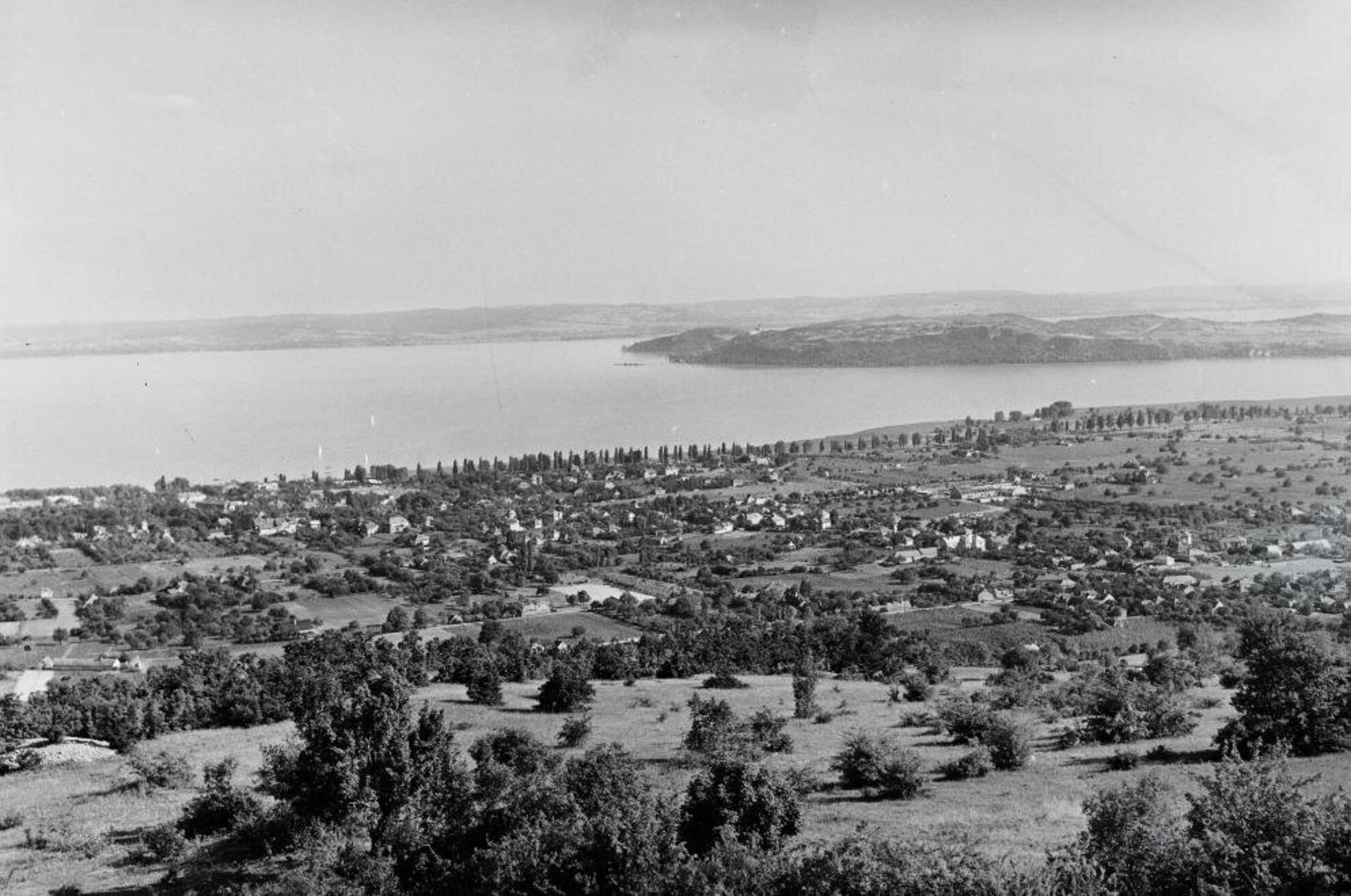
The marina with its two statues in 1963. Back then, the area wasn’t as green as it is today.
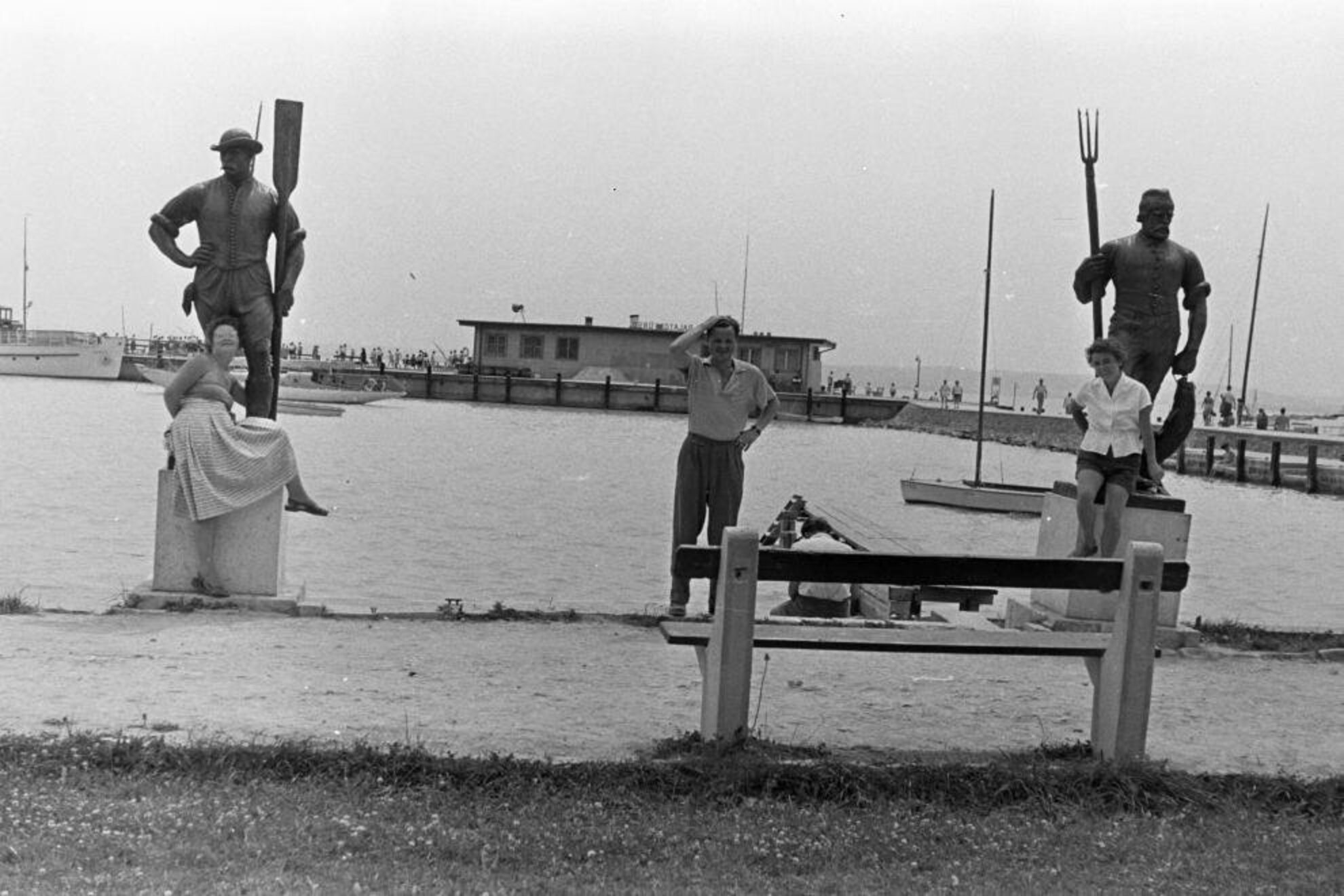
A frozen Balaton at the marina, with the Yacht Club and Vitorlás Restaurant on the shore. The winter of 1966 was cold enough for plenty of ice yachting.
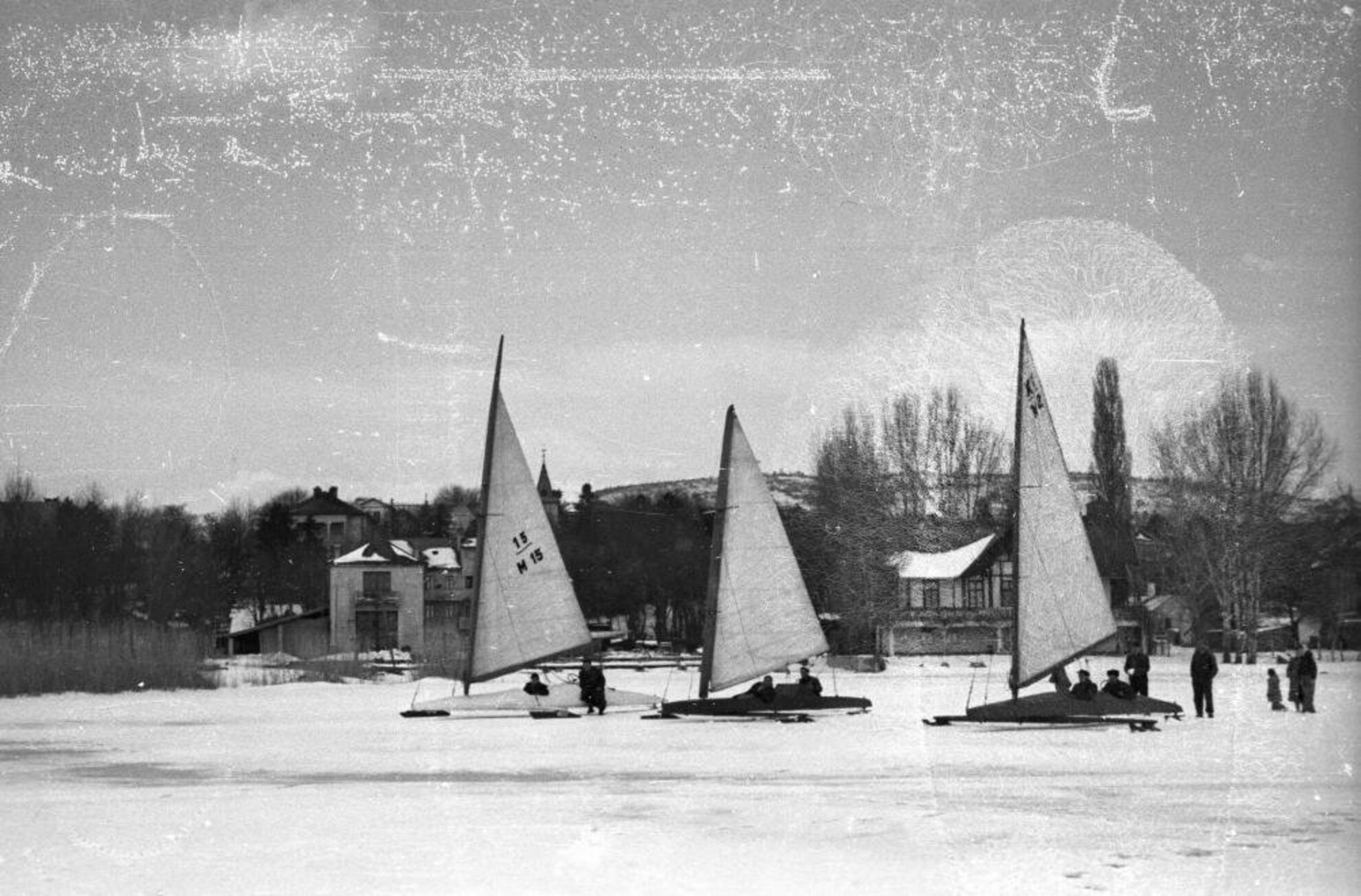
The view from the Hordó Inn towards Tihany, with the Marina hotel in the middle, in 1971. The background shows the modern buildings of Balatonfüred.
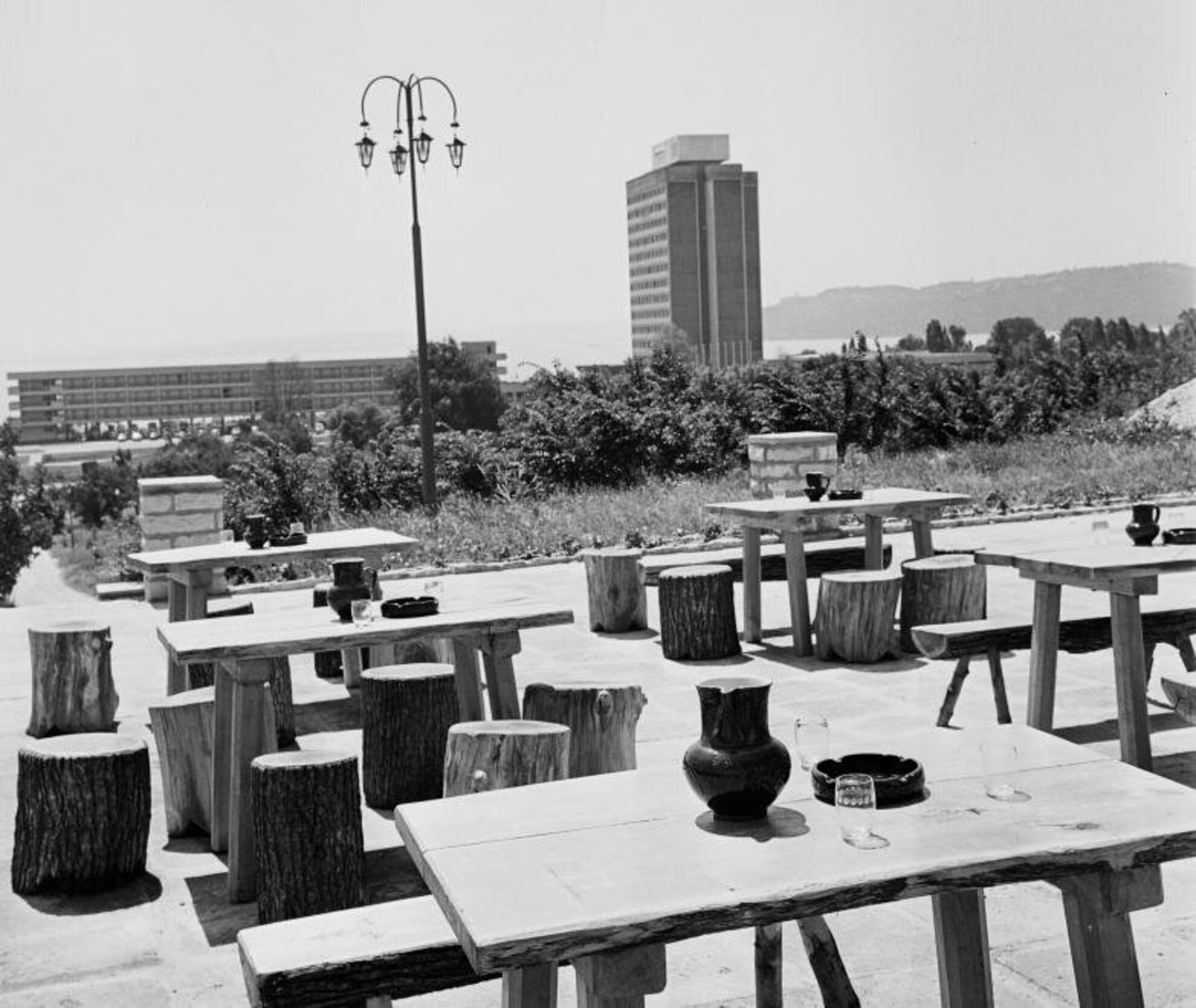
The Kedves Confectionery on Blaha Lujza utca still operates today, even though it’s much smaller than it used to be. The interior has changed, of course, although the sparkly bar is said to exist still. This photograph was taken in 1972.
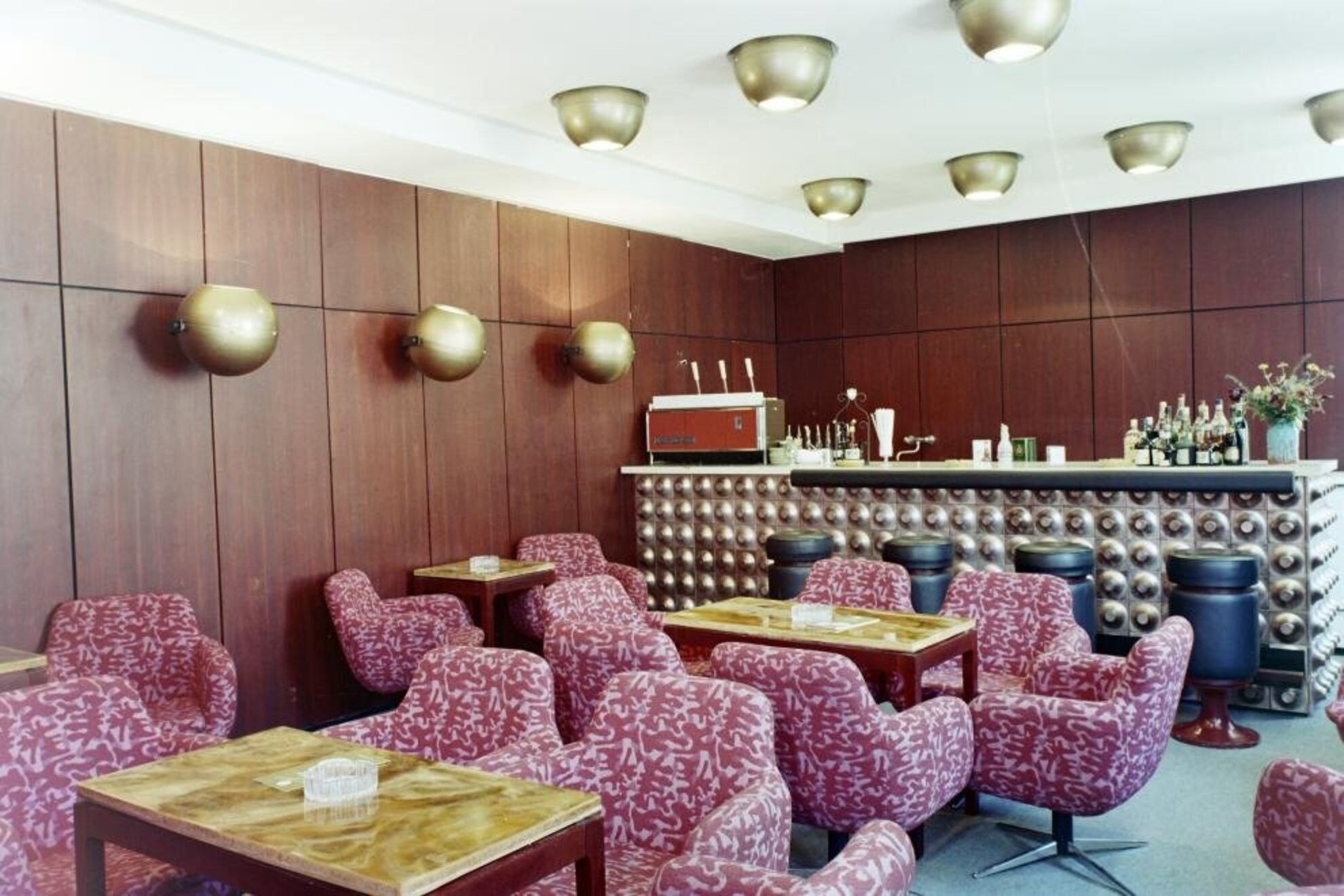
The Balatonfüred Workshop of the Hungarian Ship and Crane Factory in its heyday. This factory has since closed, but back in 1972, when this photograph was taken, it looked like something you’d see at the sea shore.
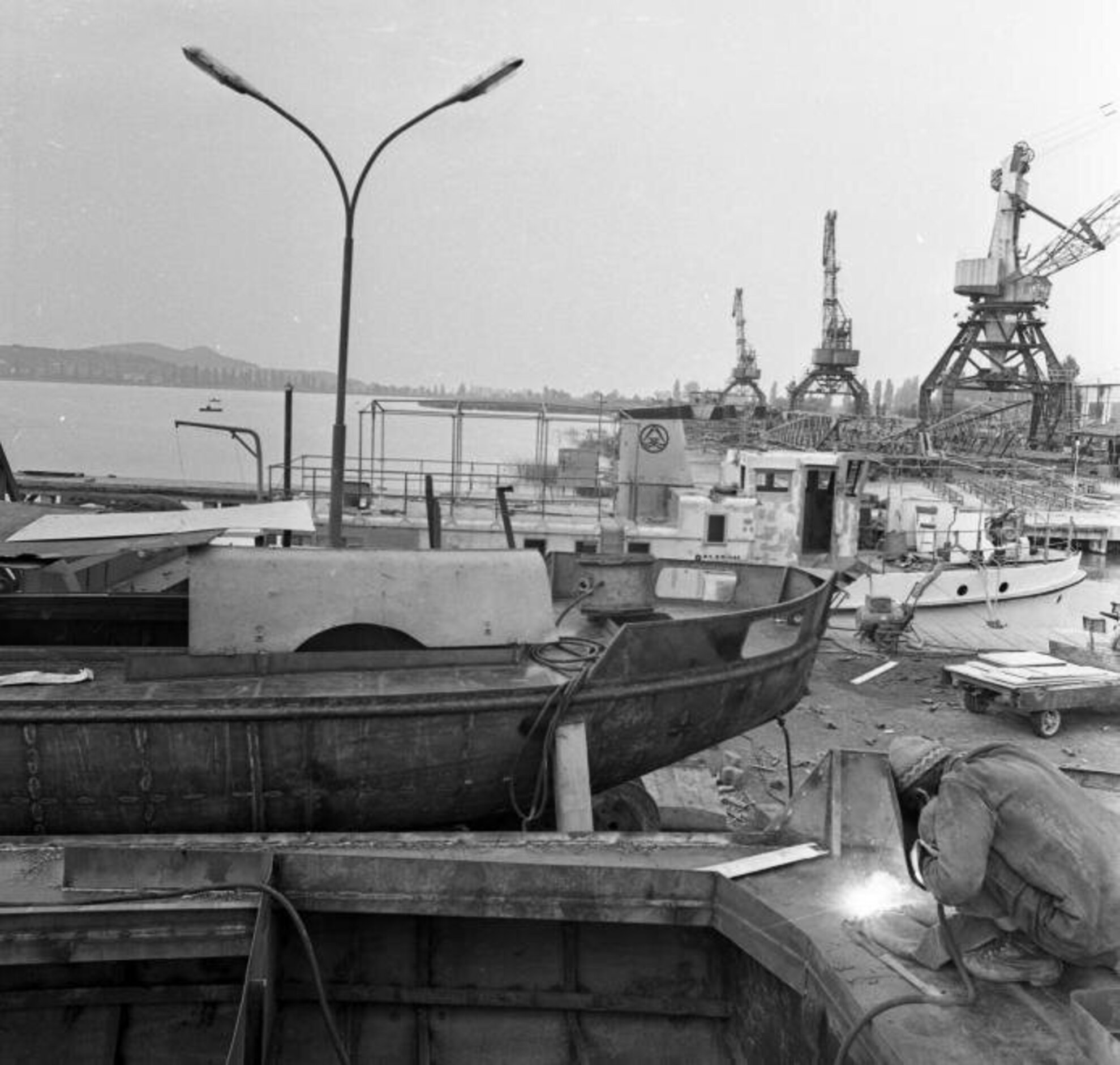
Photographs by Tamás Urbán were added to the Fortepan public archive last year. He had a knack for capturing life under Communism, and this 1973 photograph is a great example. Taken on the pier, you can see the era’s iconic building, Gomba, in the background.
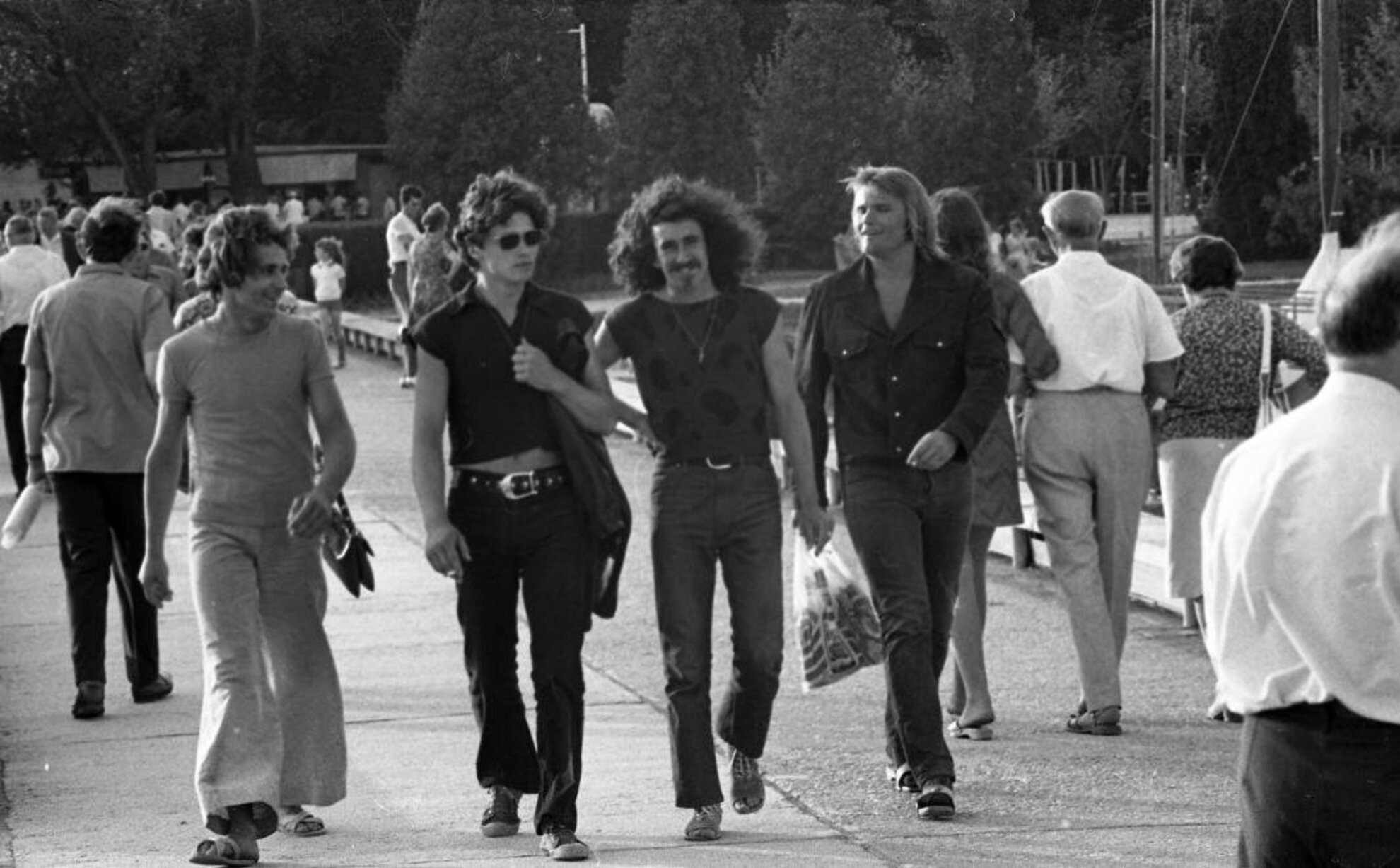
Balatonfüred’s monster of a railway station was finished in 1973, and this photograph was taken a year later.
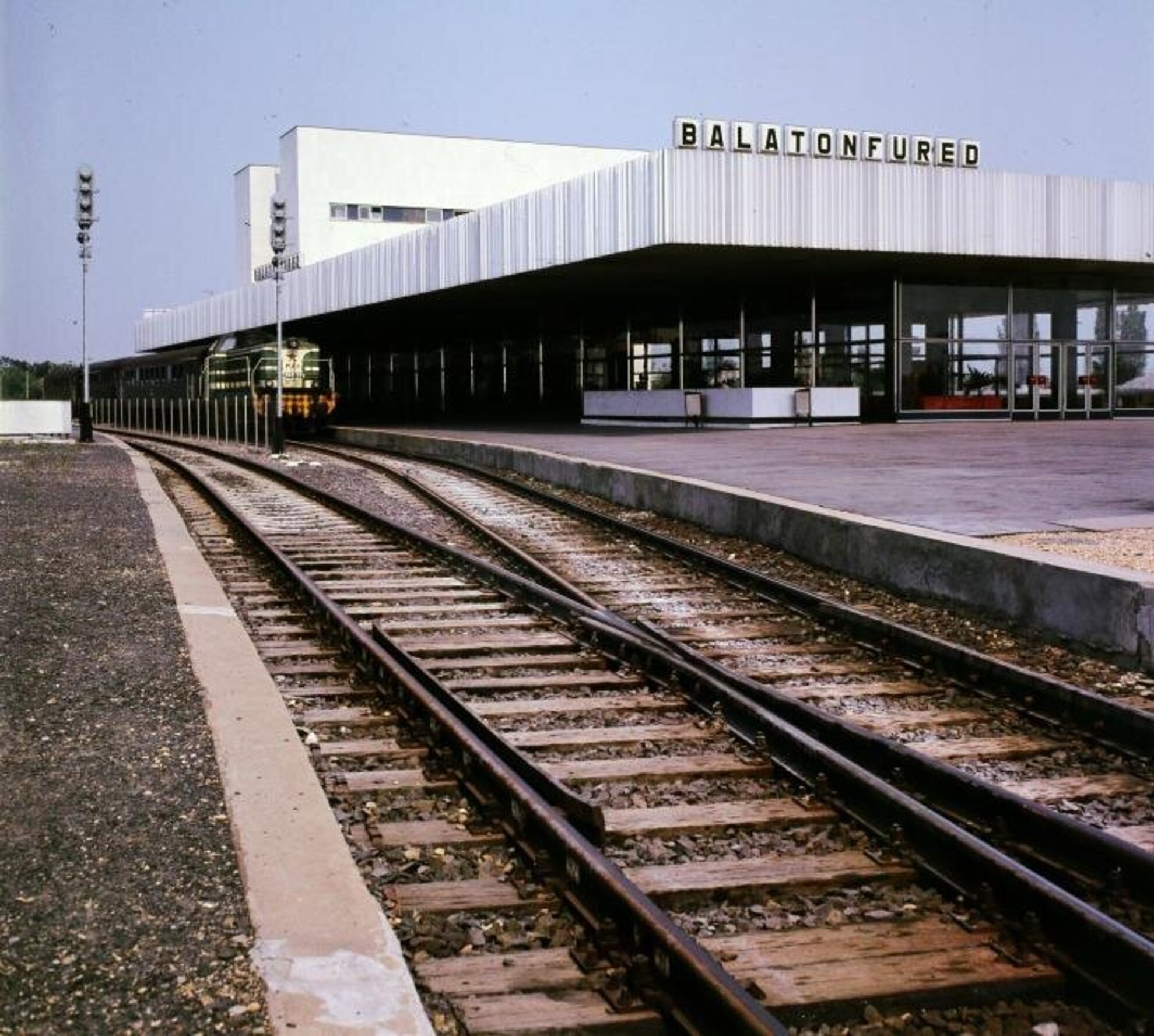
Gyógy tér, with the hotel that today is the Anna Grand. The photograph was taken during the 150th Anna Ball in 1975.
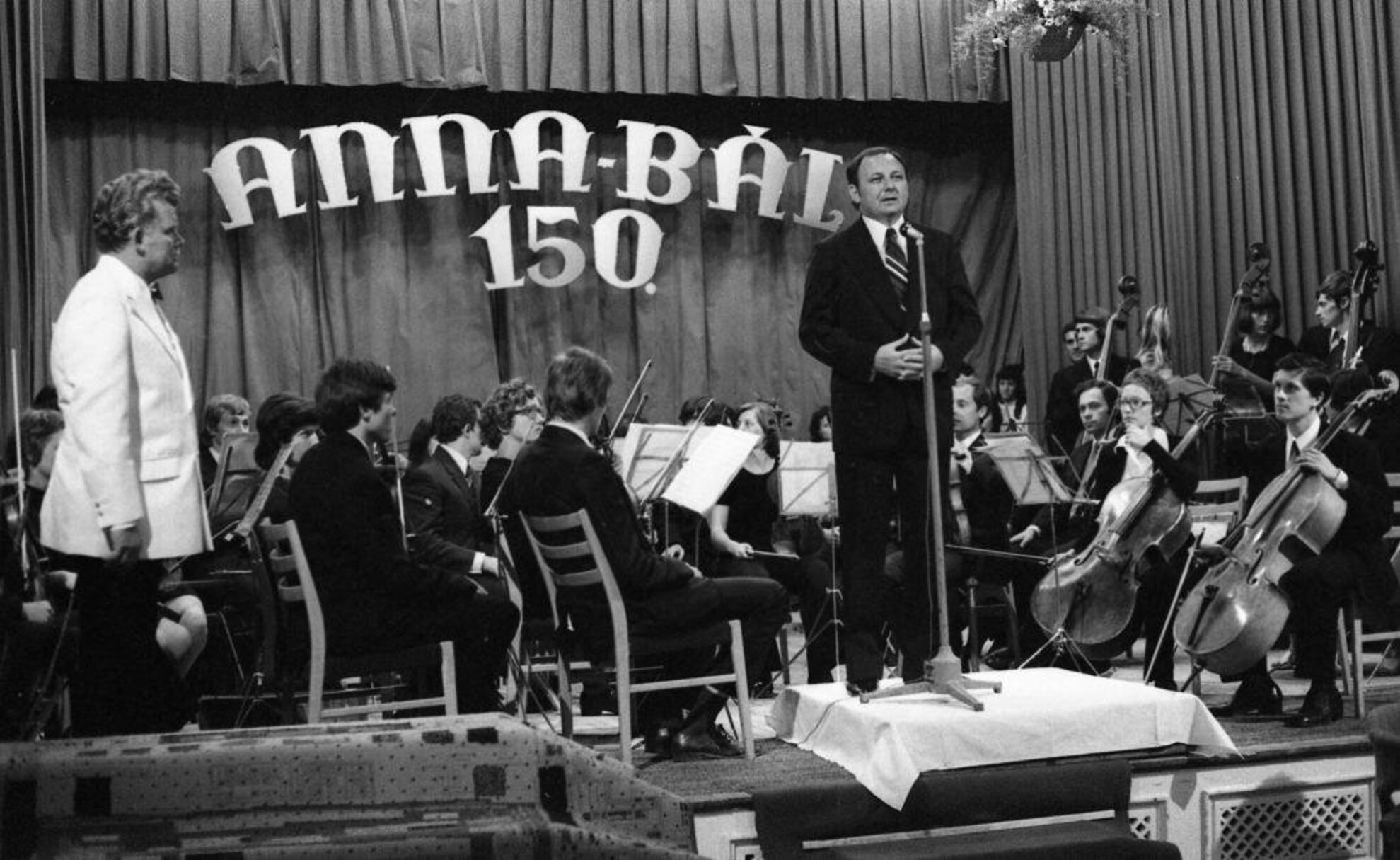
The Balatonfüred Workshop of the Hungarian Ship and Crane Factory was the venue of a now legendary music festival of new-wave bands on 7 August 1982.
